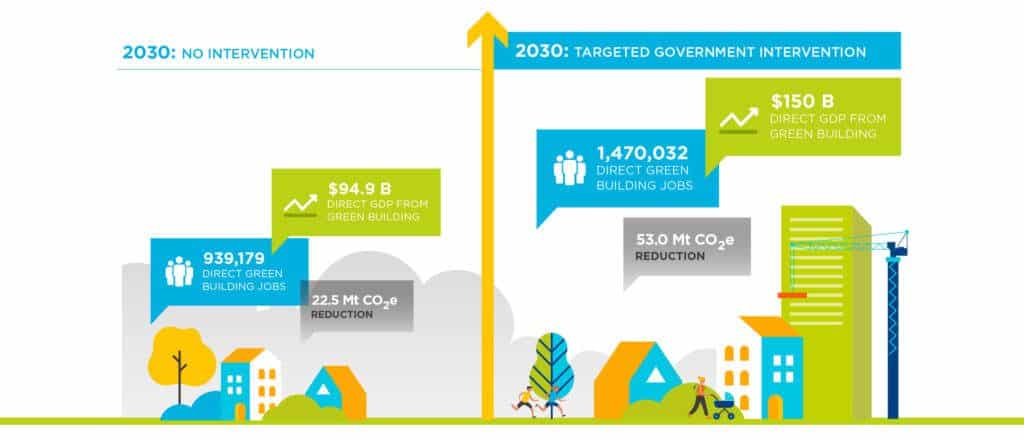Build a more sustainable future
Climate change and the need for resilient communities will mean greater demand for green buildings. To meet that demand, Canada needs to grow its building workforce. For anyone looking to work in sustainability, green building offers meaningful employment opportunities.
Canada’s 2030 and 2050 carbon reduction goals will require all buildings achieve zero-carbon performance whether they are newly built or newly retrofitted. The people who work on these buildings – from design through to construction and operations – will require new skills and knowledge.

An economic engine
In 2018, the green building industry provided over 460,000 jobs – a 55% increase over 2014, and more than oil and gas extraction, mining, and forestry combined. At the same time, green building’s contribution to Canada’s GDP grew from $23.4 billion to almost $48 billion.
Green building offers a way for Canada to recover from the recent economic slowdown caused by the global pandemic. It can create new jobs and at the same time, address climate change. Recently, CAGBC examined what impact a green recovery might have on Canada’s green building job numbers. The results were impressive.
In Canada’s Green Building Engine our modelling shows a green recovery that prioritizes green building and progressive policies could result in 1.5 million direct green building jobs and $150 billion in GDP by 2030. That’s a lot of opportunity in one sector.

What’s driving green building?
| Key Drivers | Focus Areas |
|---|---|
| Climate Change | Embodied Carbon |
| The Circular Economy | Smart Buildings |
| Healthy, Inclusive Buildings | Energy Storage |
| Retrofits | Sustainable Materials |
Supporting the workforce
Canada’s climate commitments and economy demand more building retrofit projects and new low-carbon construction. To keep up, the green building workforce will need to upskill and grow.
CAGBC is working with government, training providers, academia, unions and employers to update training to reflect low-carbon building and retrofits. Working with the sector, we’re identifying training gaps and developing courses to prepare the existing workforce.
At the same time, the green building workforce must grow. Attracting workers impacted by COVID-19 or under-represented groups like women, newcomers, Indigenous or racially diverse communities serves two goals: grow the green building workforce and address inequality.
Learn how this approach is taking shape with Workforce 2030, a coalition of industry leaders fast-tracking the workforce needed to build a low-carbon future.

